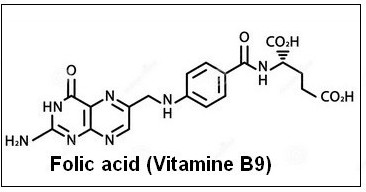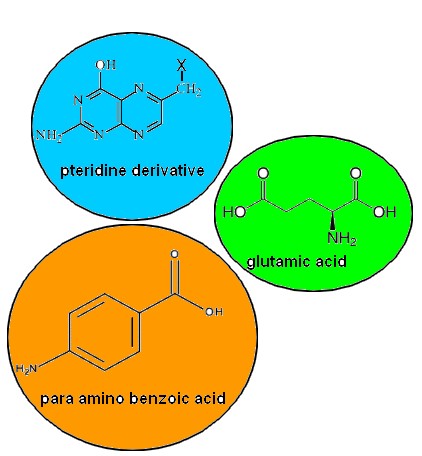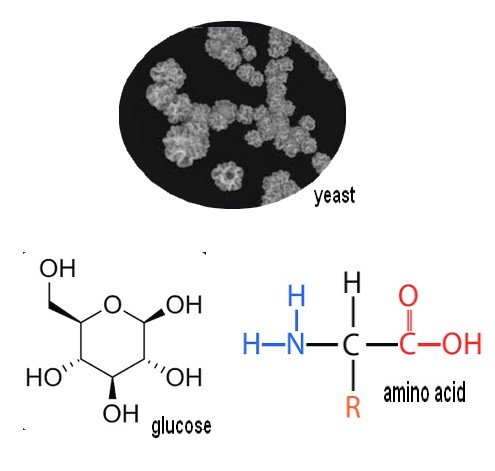

Main folic acid producers 1. BASF (Germany) One of the largest chemical companies in the world, BASF produces folic acid as part of its portfolio of vitamins and nutritional ingredients. Their folic acid products are widely used in dietary supplements and fortified foods. 2. DSM Nutritional Products (Netherlands) DSM is a global leader in health, nutrition, and bioscience. They produce synthetic folic acid for use in supplements, food fortification, and pharmaceutical applications. Their products often meet stringent pharmaceutical-grade standards. 3. Xinfa Pharmaceutical (China) A leading Chinese manufacturer, Xinfa Pharmaceutical is known for producing vitamins and intermediates, including folic acid. They supply folic acid globally for use in the pharmaceutical and food industries. 4. Zhejiang NHU Co., Ltd. (China) Zhejiang NHU is a prominent producer of nutritional and pharmaceutical-grade folic acid. The company is recognized for its extensive portfolio of synthetic vitamins and APIs (Active Pharmaceutical Ingredients). | 5. Hebei Jiheng Group (China) Another major Chinese manufacturer specializing in the production of folic acid and other nutritional products. They cater to global markets with competitive pricing and large-scale production capabilities. 6. Shandong Xinfa Pharmaceutical Co., Ltd. (China) Specializing in bulk production of vitamins, including folic acid, Shandong Xinfa is a significant exporter of folic acid for supplement and pharmaceutical industries. 7. Lianyungang Jinkang Hexin Pharmaceutical Co., Ltd. (China) This company focuses on producing high-quality folic acid for use in dietary supplements, fortified foods, and pharmaceuticals. 8. Merck Group (Germany) Merck produces pharmaceutical-grade folic acid, particularly for medical applications. The company focuses on high-purity production, often tailored to clinical and therapeutic needs. |
Main use for folic acid As of today, folic acid (a synthetic form of folate, vitamin B9) is widely used for various health-related purposes, primarily in medical, nutritional, and preventive contexts. Here are its main uses: 1. Pregnancy and Fetal Development Prevention of Neural Tube Defects (NTDs): Folic acid is crucial for pregnant women to reduce the risk of birth defects like spina bifida and anencephaly. It is recommended that women of childbearing age take 400–800 micrograms daily before and during early pregnancy. Support for Healthy Fetal Growth: Promotes proper cell division and DNA synthesis essential for the developing fetus. 2. Nutritional Supplementation Treatment of Folate Deficiency: Used to treat or prevent folate deficiency, which can occur due to: Poor dietary intake. Certain medical conditions (e.g., malabsorption syndromes like celiac disease or Crohn's disease). Alcoholism. Certain medications (e.g., methotrexate, sulfasalazine). Fortification in Foods: Commonly added to cereals, bread, and other staples to reduce population-level folate deficiencies. 3. Treatment of Specific Medical Conditions Megaloblastic Anemia: Treats anemia caused by folate deficiency, characterized by large, immature red blood cells. Homocysteine Management: Helps lower elevated homocysteine levels, which are associated with an increased risk of cardiovascular disease. Methotrexate Toxicity Mitigation: Prescribed alongside methotrexate therapy (used in cancer or autoimmune diseases) to reduce side effects by replenishing folate levels. | 4. Potential Role in Chronic Disease Prevention Heart Disease: May reduce the risk of heart disease by lowering homocysteine, though this remains an area of active research. Cancer: Plays a role in DNA repair and replication, potentially reducing the risk of certain cancers. However, excessive intake might increase the risk of some cancers. Cognitive Health: Being studied for its role in reducing the risk of cognitive decline and Alzheimer's disease, especially when combined with other B vitamins. 5. Dermatology and Skin Health Hair and Nail Growth: Folic acid is sometimes included in supplements marketed for hair and nail health. Skin Health: Supports cell turnover, contributing to healthy skin. 6. Pediatric and Adolescent Health Growth and Development: Important for rapidly growing children and adolescents to support cell growth and repair. 7. Research and Experimental Uses Mental Health: Being explored for its potential to improve symptoms of depression, especially in combination with antidepressants. Autism Spectrum Disorders (ASD): Some studies suggest a role in reducing ASD risk during pregnancy, though more research is needed. Typical Dosage: General adult needs: 400 mcg/day. Pregnancy: 400–800 mcg/day; up to 4 mg/day for those at high risk of NTDs. Medical conditions: Dosages may vary based on the specific condition and doctor's advice. |
Chemical synthesis Folic acid (vitamin B9) is a synthetic form of folate, which is naturally found in foods like leafy greens, fruits, and legumes. The production of folic acid involves chemical synthesis, typically in a pharmaceutical or industrial setting. Here's an outline of the process: 1. Starting Materials The synthesis begins with raw materials like: Pteridine derivatives: A heterocyclic compound forming the base of folic acid. Para-aminobenzoic acid (PABA): A key intermediate in the synthesis. Glutamic acid: An amino acid that attaches to PABA to form folic acid. 2. Chemical Synthesis Process The production process involves a series of chemical reactions: Condensation Reaction: Pteridine derivatives are reacted with PABA to form dihydropteroic acid. Coupling with Glutamic Acid: The dihydropteroic acid is combined with glutamic acid to produce folic acid. Oxidation: The intermediate compound undergoes oxidation to stabilize and form the final folic acid structure. 3. Purification The crude folic acid is purified to remove impurities. Techniques like crystallization or chromatography are used to achieve a high-purity product suitable for pharmaceutical or food fortification. 4. Formulation The purified folic acid is then formulated into tablets, capsules, or added to food products as a fortifying agent. Some more detailed examples of chemical synthesis here |  |
Biotechnological Alternatives Biotechnological methods for producing folic acid are gaining attention due to their sustainability and reduced environmental impact compared to chemical synthesis. Several research initiatives and companies are exploring or have adopted these methods . Certain microorganisms, such as Scheffersomyces stipitis and other yeast or bacterial strains, are engineered for folate production. These systems are optimized through metabolic engineering to utilize substrates like glucose and xylose for vitamin B9 synthesis. This approach is still primarily in the research or pilot stage. (see results 2022) While most of the vitamin B9 market currently relies on chemical synthesis, companies producing other vitamins through fermentation, such as BASF for vitamin B2 (riboflavine see BASF advertising ), are likely candidates for adopting similar methods for folic acid production as metabolic engineering technology advances |  |